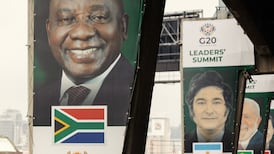Things ain't quite what they used to be, down at the Domus Santa Marta residence in the Vatican. For a start, there is a deal of commotion every morning, with some of the inmates of the Holy See's very own B&B doing their best to get their breakfast quickly and get out fast before "Himself" comes down to eat.
Other inmates, however, tend to be in no hurry, perhaps only too glad to share a table with the residence’s most famous inmate, using the occasion if not to promote a particular cause, well at least to curry a little pontifical favour.
For, of course, the point is that six weeks on from his election, Pope Francis continues to live in the Domus Santa Marta.
For the time being, it seems he intends to stay there, rather than move into the papal apartment in the Pontifical Palace.
In a briefing the other day, papal spokesman and fellow Jesuit Fr Federico Lombardi acknowledged that Papa Francesco is “very comfortable” in the Domus Santa Marta.
As an order priest, he has long been used to life in a community and therefore it seems only normal to him that he should continue to live in a residence where he has an opportunity to meet informally with a vast range of visiting bishops and cardinals.
The decision not to move into the papal apartment, however, is obviously about more than formality and informality. It sends a clear signal about the pope’s intention to dispose of some of the more pompous expressions of papal power.
However, as the former president of the Italian Bishops’s Conference Cardinal Camillo Ruini pointed out the other day, Francis might be willing to jettison the trappings of power but he quite clearly intends to hold on to and use that power itself.
Telephone manner
Pope Francis might well like to live simply. Pens on the desk and books piled up in his Santa Marta apartment would suggest that he is no "technological" genius.
However, he is good on the phone – be it to his local news kiosk in Buenos Aires to cancel his subscription to Argentine daily La Nacion or to compatriot Don Cesar Alejandro Pluchinotta, the parish priest at Santa Maria Annunziata in Montorio Romano, close to Rome.
He phoned Don Pluchinotta the other morning to personally thank him for having sent him a copy of his book about José Gabriel Brochero, a soon to be beatified 19th-century Argentine priest.
Don Brochero’s dedication to the suffering and the poor in Argentina cost him his life, from leprosy that he contracted from visiting sufferers.
When Don Pluchinotta thanked the pope for having taken the trouble to phone him, Francis replied: “It seems only good manners to me. You made me a present of your book and I wanted to thank you.”
Important decisions
In these first weeks, however, Francis has done more than hug babies, wave football shirts (the most recent was that of Argentine international Javier Zanetti who had a private audience with him on Thursday) and greet everyone at the Angelus with a disarming "
Buon Giorno
", delivered in a fluent, engagingly accented Italian.
In these first weeks, he has already taken important and indicative decisions, aside from a number of important nominations such as that of Archbishop Mario Poli, as his successor in Buenos Aires.
At least two decisions stand out – namely the "unblocking" of the beatification process of El Salvador archbishop, Oscar Romero and the appointment of an eight man, "Privy Council" of non-Curia cardinals to advise him.
The decision to beatify Romero ends a 30-year long controversy. While for many in Latin America he was a hero and a martyr after his 1980 assassination, both Popes John Paul II and Benedict XVI felt that he had been too close to the Latin American liberation theology movement. With this beatification, Francis rings a very loud bell on behalf of the “church of the poor”.
As for the so-called “Privy Council”, its composition says it all – only one Italian Curia cardinal flanked by men from Latin America, North America, Australia, India, Germany and the Democratic Republic of Congo.
Born out of the " congregazioni generali " that preceded the conclave, this group represents a radical switch from the vertical to the horizontal, as far as Holy See governance goes. Curia reform, perhaps radical, seems guaranteed.
Little wonder that an experienced Curia hand such as Archbishop Piero Marini recently told a newspaper in Costa Rica that Francis had brought "a breath of fresh air".
Will that “breath” build up to a “storm” of change?











